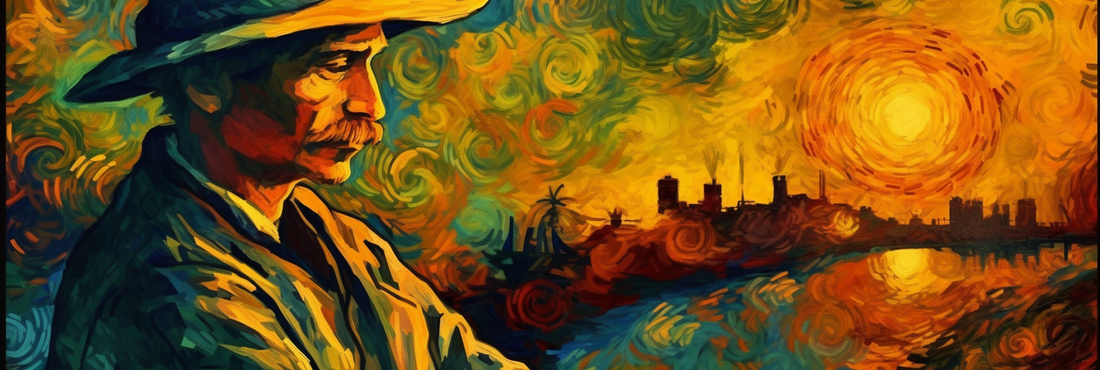
Art's Resilience: A Beacon in Times of Strife
Daniel WroblewskiShare
Art, a vibrant force throughout history, has a unique way of illuminating the darkest periods. It shines in the face of wars, plagues, and economic turmoil, offering comfort, inspiration, and courage. In this article, we delve into the significance of art during life's roughest patches, exploring instances when it has not only survived but thrived.
Art Amidst War
Amidst the destruction that wars bring, artists often find themselves exploring the depths of human emotion. They create works that remain etched in history, reminding us of the struggles and resilience of the human spirit. World War I (1914-1918) saw the birth of poignant pieces like Otto Dix's unnerving portrayals of trench warfare. World War II (1939-1945), on the other hand, brought forth Abstract Expressionism, led by the likes of Jackson Pollock and Mark Rothko. Their expressive, daring strokes reflected the era's upheaval, pushing the envelope of artistic creation.
Art in Times of Disease
Disease, too, has shaped the course of artistic expression. The 14th-century bubonic plague outbreak in Europe gave rise to the Danse Macabre. This unique art genre featured skeletons mingling with the living, symbolizing the inescapable reality of death. Fast forward to the AIDS epidemic of the 1980s, and we witness artists like Keith Haring and David Wojnarowicz using their craft to raise awareness, challenge stigma, and pay tribute to the fallen. Art spurred empathy and activism, fueling the fight for a cure.
Art During Financial Crises
Economic slumps, though painful, have often been fertile ground for artistic innovation. The Great Depression of the 1930s brought forth the Works Progress Administration's Federal Art Project. This initiative funded the likes of Jackson Pollock, Mark Rothko, and Willem de Kooning, enabling them to create public works that inspired and uplifted the masses.
Similarly, the 2008 global financial crisis sparked a street art revolution. Artists like Banksy and JR began using accessible, affordable mediums to critique economic systems and societal disparities. Their work resonated with the public, giving rise to a new wave of creative expression.
The Function of Art in Troubled Times
In the face of adversity, art serves several crucial purposes. Firstly, it acts as a conduit for expression, enabling artists to share their emotions, fears, and aspirations. This process fosters connection, reminding us that we're not alone.
Secondly, art inspires change and fuels activism. Be it political cartoons, protest songs, or provocative installations, art has the power to rally people, giving voice to those silenced by society.
Lastly, art provides an escape from reality. A beautiful painting or a soul-stirring piece of music can transport us to other worlds, reminding us of our own resilience and the potential for brighter days.
Though wars, pandemics, and financial crises bring immense hardship, they also act as catalysts for artistic expression and growth. Time and again, art has proven its capacity to heal, unite, and inspire. By embracing creativity and championing artists, we can continue to cultivate a rich, diverse artistic landscape that enriches our lives for generations to come.
Art Amidst War
Amidst the destruction that wars bring, artists often find themselves exploring the depths of human emotion. They create works that remain etched in history, reminding us of the struggles and resilience of the human spirit. World War I (1914-1918) saw the birth of poignant pieces like Otto Dix's unnerving portrayals of trench warfare. World War II (1939-1945), on the other hand, brought forth Abstract Expressionism, led by the likes of Jackson Pollock and Mark Rothko. Their expressive, daring strokes reflected the era's upheaval, pushing the envelope of artistic creation.
Art in Times of Disease
Disease, too, has shaped the course of artistic expression. The 14th-century bubonic plague outbreak in Europe gave rise to the Danse Macabre. This unique art genre featured skeletons mingling with the living, symbolizing the inescapable reality of death. Fast forward to the AIDS epidemic of the 1980s, and we witness artists like Keith Haring and David Wojnarowicz using their craft to raise awareness, challenge stigma, and pay tribute to the fallen. Art spurred empathy and activism, fueling the fight for a cure.
Art During Financial Crises
Economic slumps, though painful, have often been fertile ground for artistic innovation. The Great Depression of the 1930s brought forth the Works Progress Administration's Federal Art Project. This initiative funded the likes of Jackson Pollock, Mark Rothko, and Willem de Kooning, enabling them to create public works that inspired and uplifted the masses.
Similarly, the 2008 global financial crisis sparked a street art revolution. Artists like Banksy and JR began using accessible, affordable mediums to critique economic systems and societal disparities. Their work resonated with the public, giving rise to a new wave of creative expression.
The Function of Art in Troubled Times
In the face of adversity, art serves several crucial purposes. Firstly, it acts as a conduit for expression, enabling artists to share their emotions, fears, and aspirations. This process fosters connection, reminding us that we're not alone.
Secondly, art inspires change and fuels activism. Be it political cartoons, protest songs, or provocative installations, art has the power to rally people, giving voice to those silenced by society.
Lastly, art provides an escape from reality. A beautiful painting or a soul-stirring piece of music can transport us to other worlds, reminding us of our own resilience and the potential for brighter days.
Though wars, pandemics, and financial crises bring immense hardship, they also act as catalysts for artistic expression and growth. Time and again, art has proven its capacity to heal, unite, and inspire. By embracing creativity and championing artists, we can continue to cultivate a rich, diverse artistic landscape that enriches our lives for generations to come.
